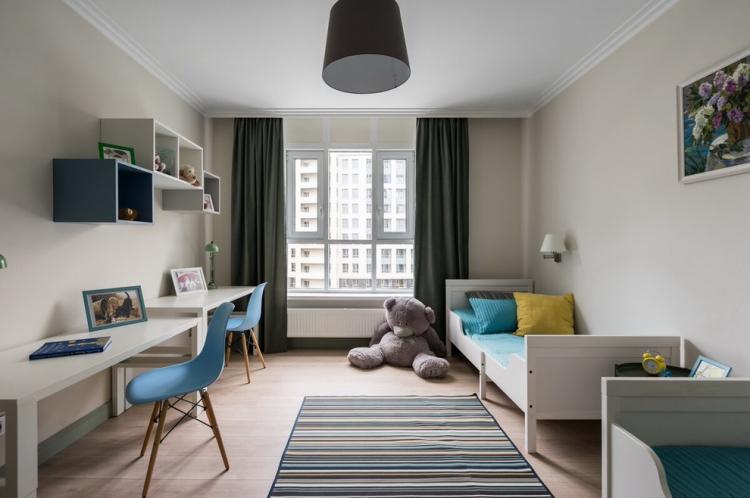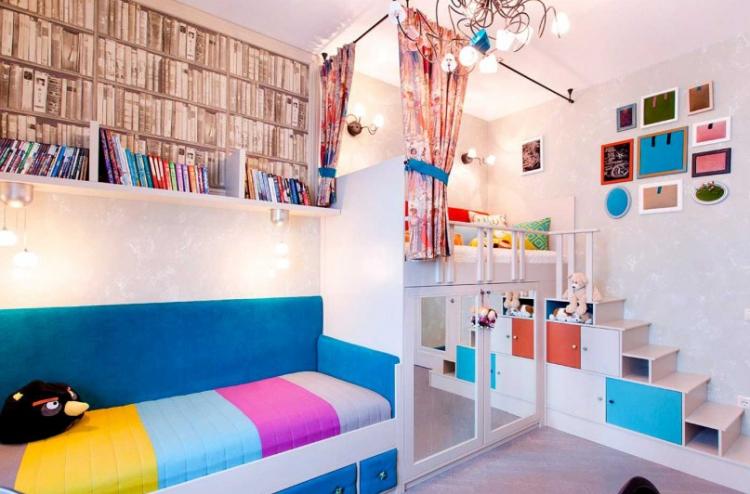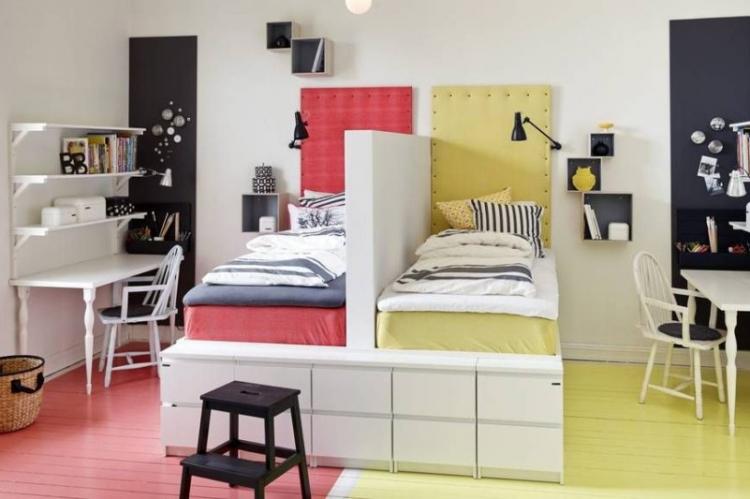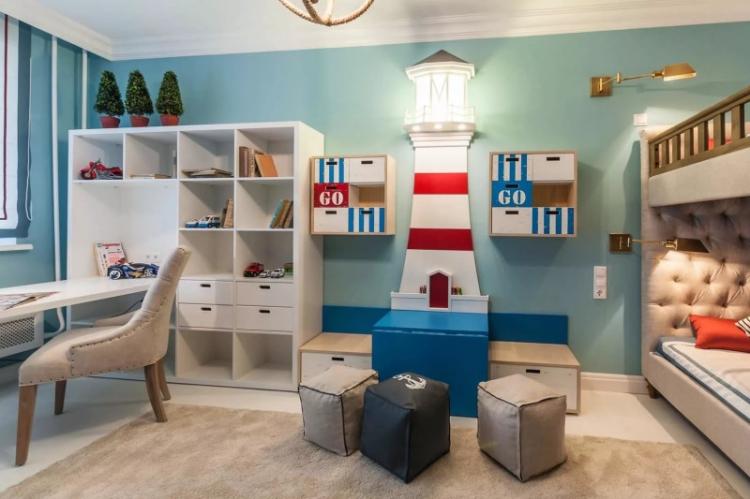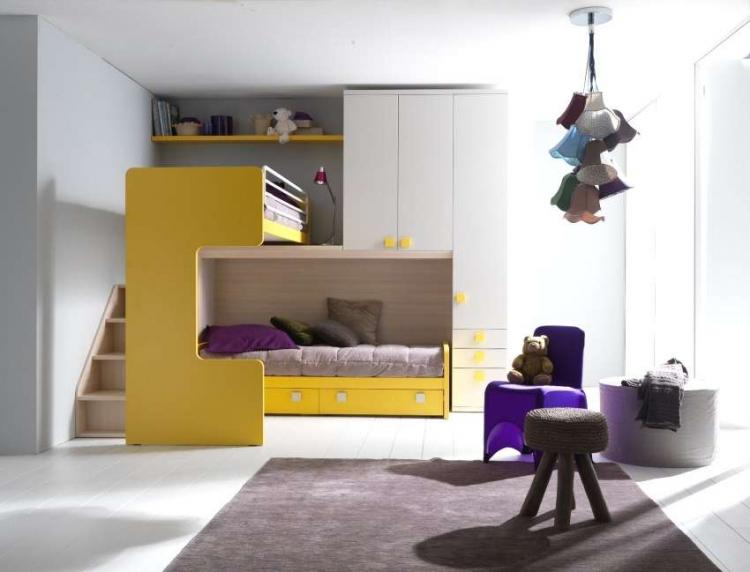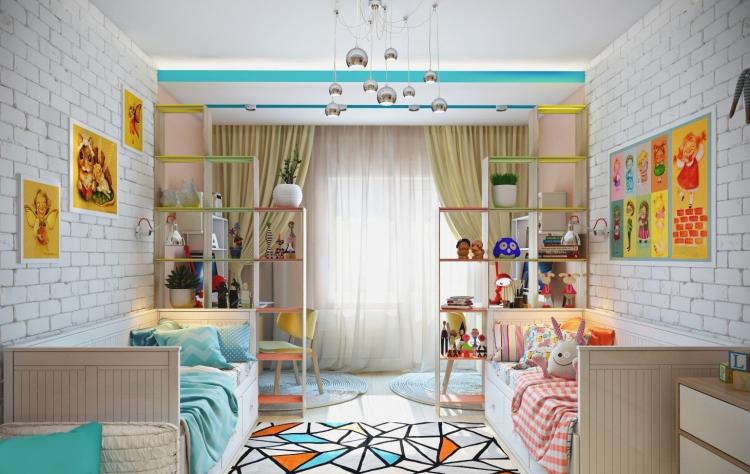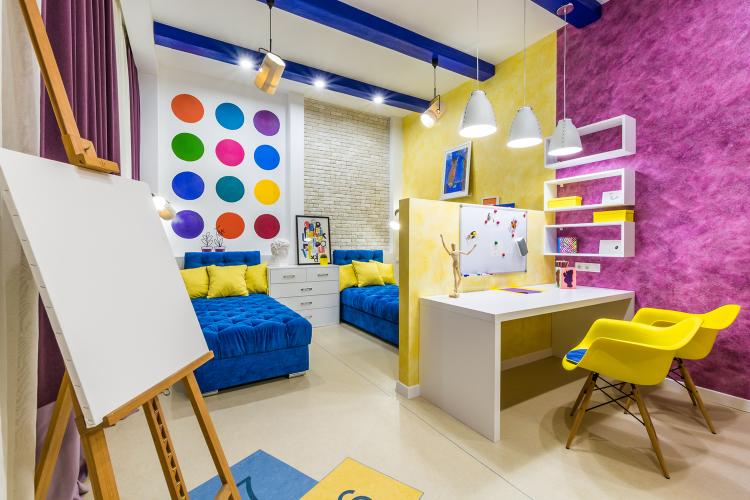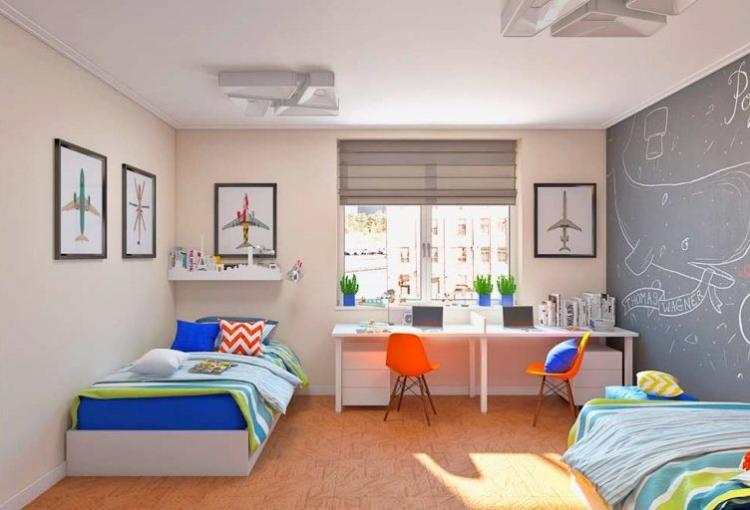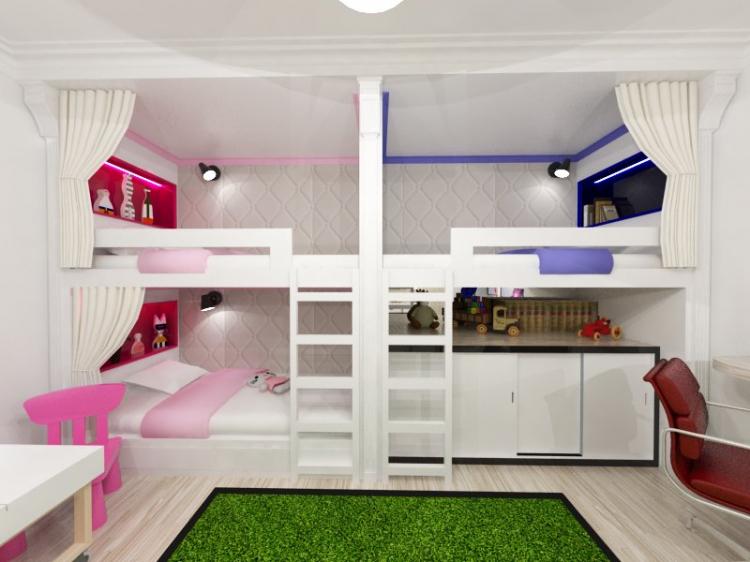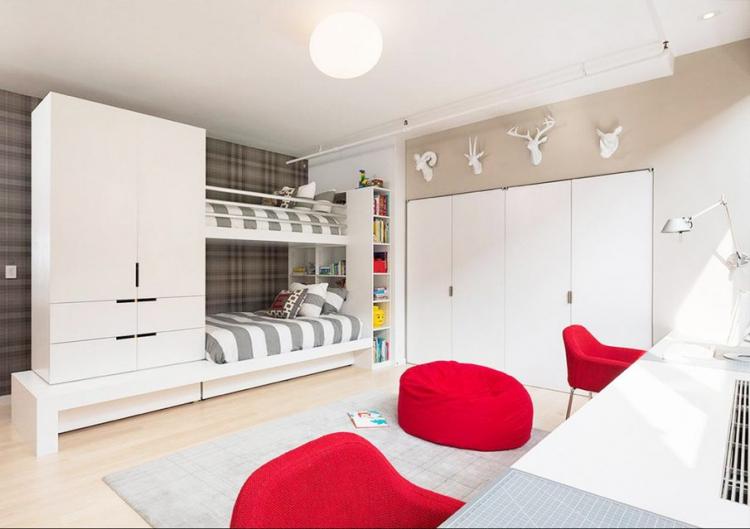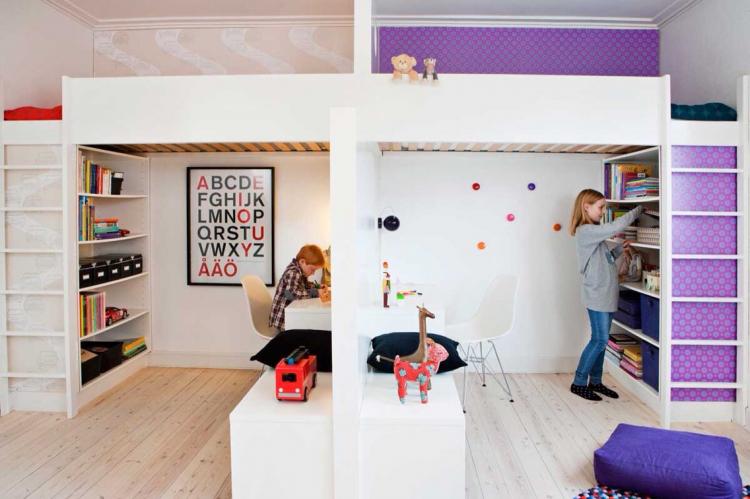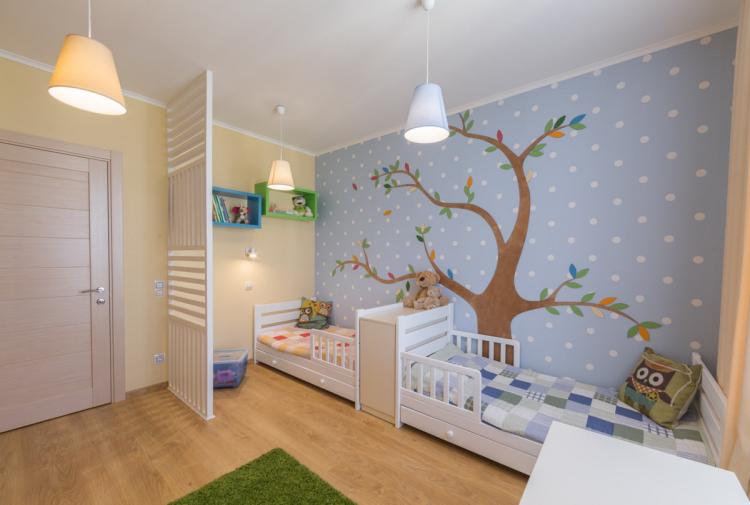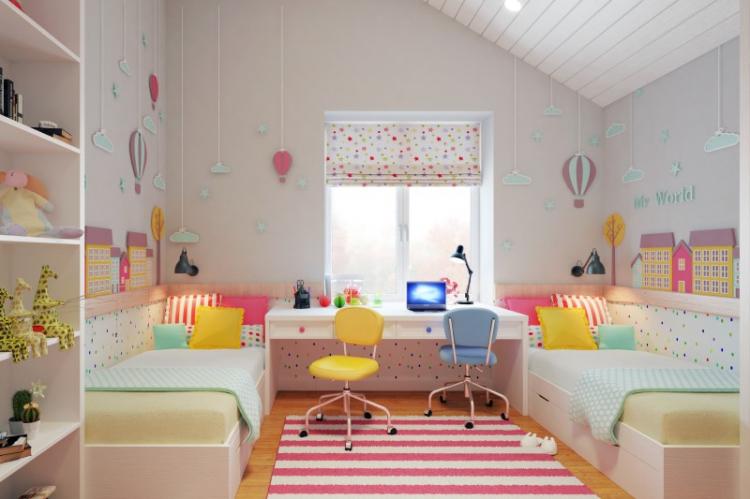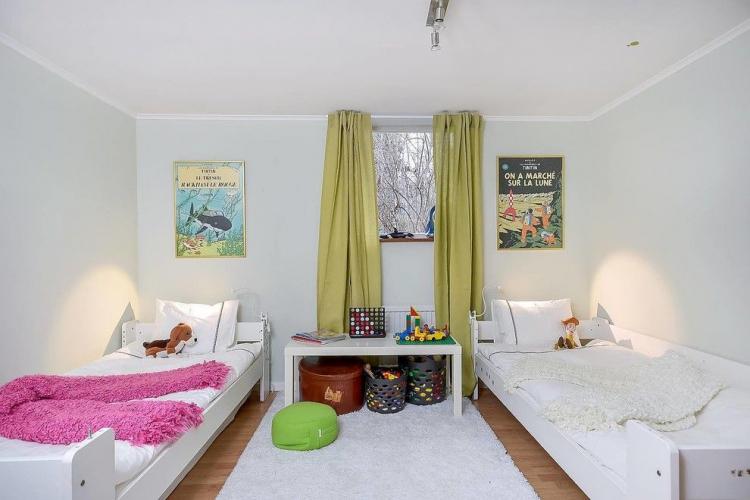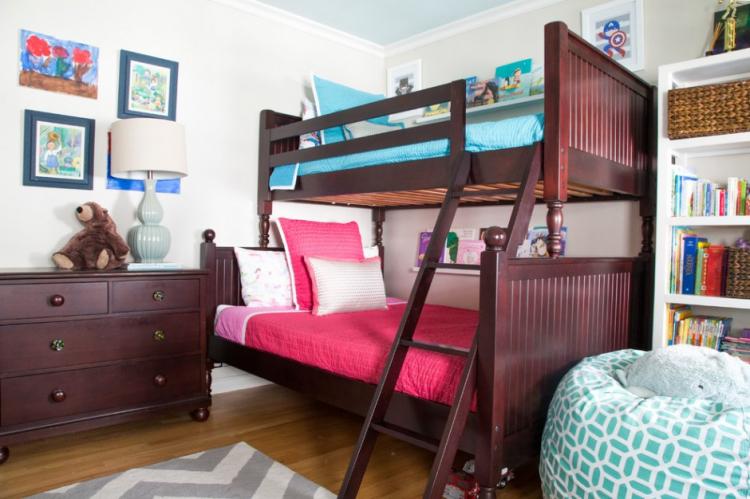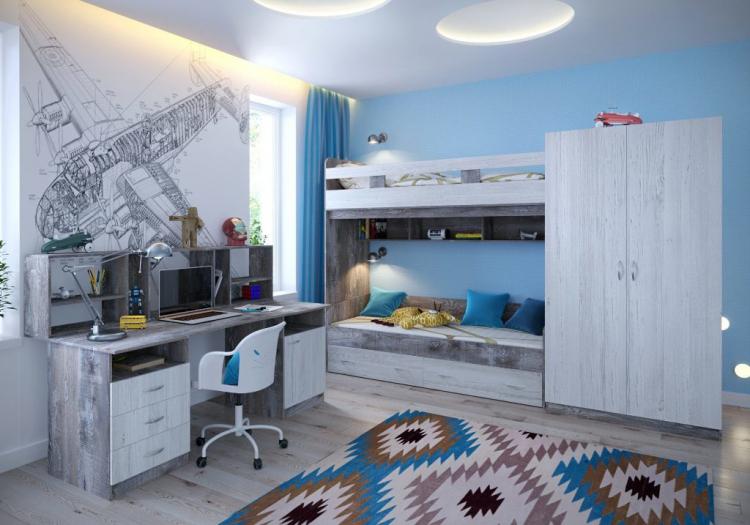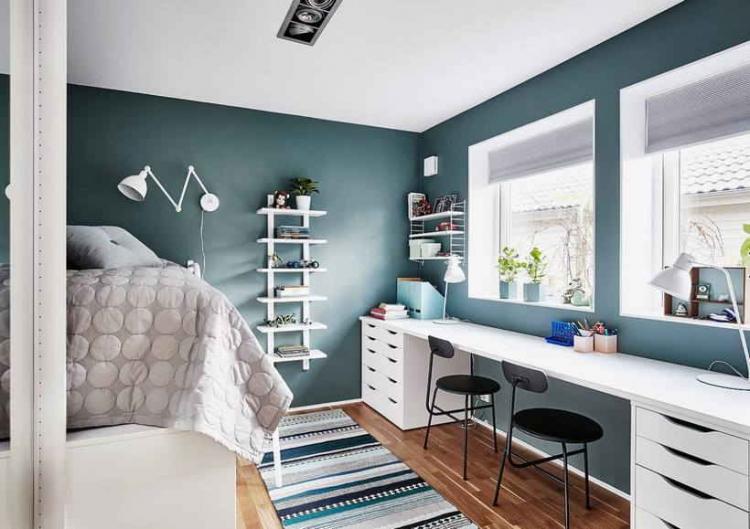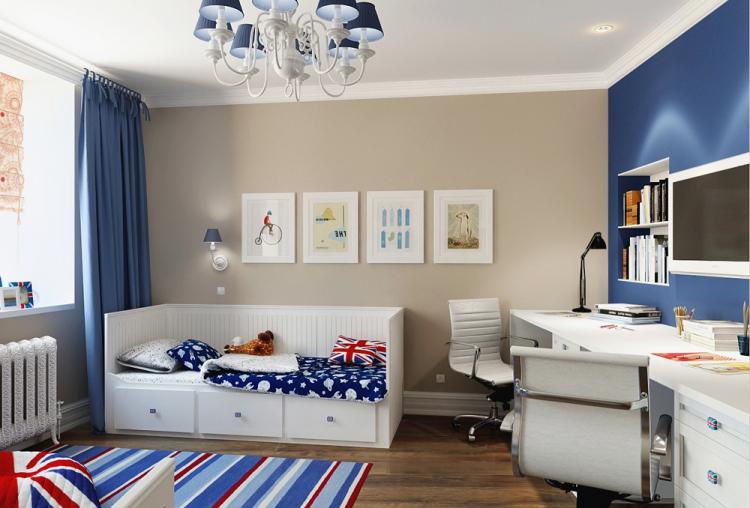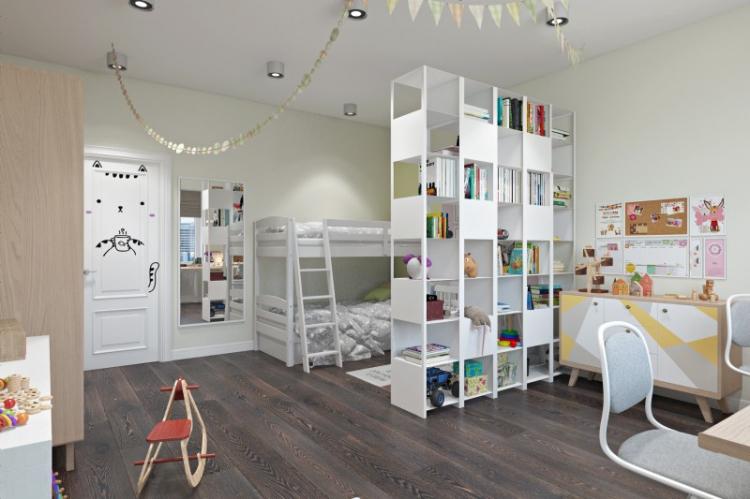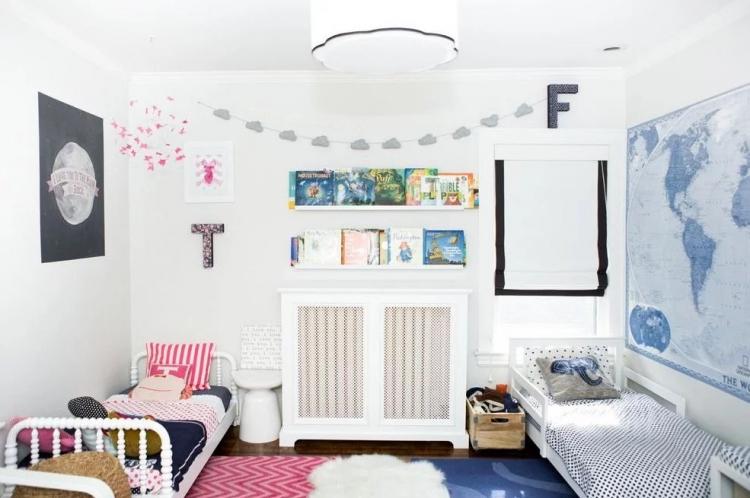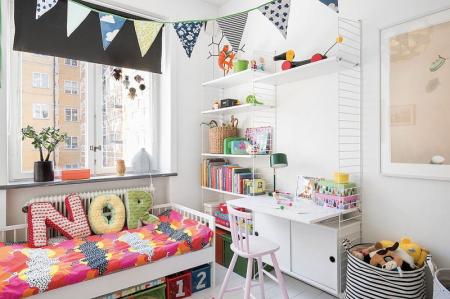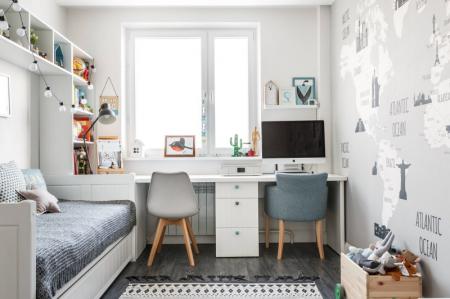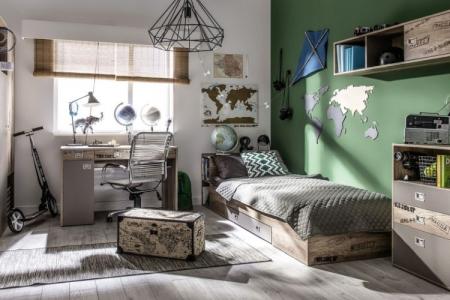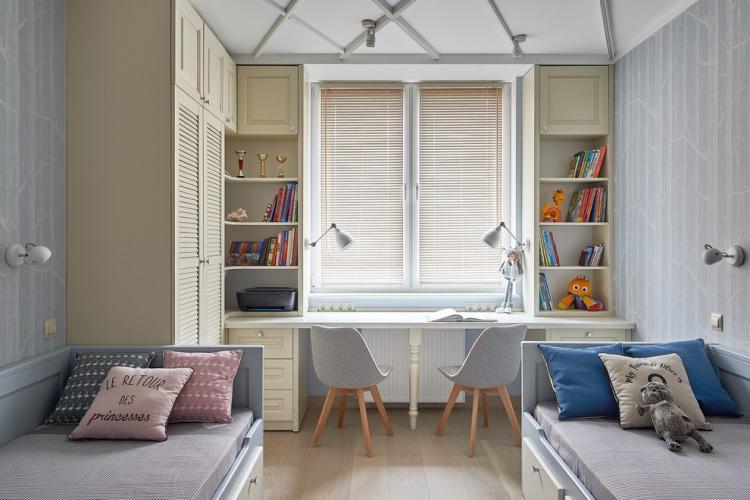
Competently equipping a children's room is not easy, the task becomes even more complicated when it comes to children of different sexes. After all, it is the parents who must foresee all the options in advance and make sure that the kids get along well in the same territory. And so that everyone feels good and comfortable!
The territory in half
The main difficulty in designing a nursery for children of different sexes is not to offend anyone. Therefore, think about how to delimit the territory for two. Your own space is especially important at a young age. After all, it is at this time that the perception of the external world is laid and relationships with it are built.
Parallel zoning
An excellent layout for spacious, and best of all, square rooms. Although you can think over an elongated room: you just need to experiment with the layout and location of windows and doors.
The room is simply divided in half. To do this, use a wardrobe, rack, partition, curtains. The color scheme of both parts may vary. So that the nursery does not look too clumsy, leave the general style, background or accents. For example, plain walls or beds of the same model, but with different colors of textiles.
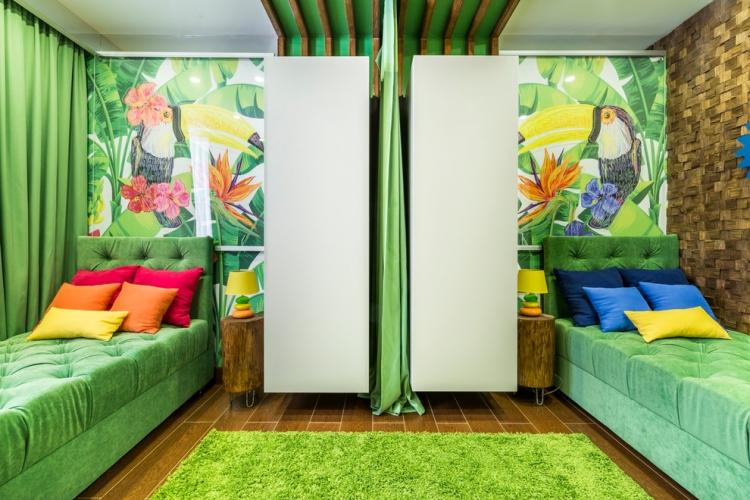
Diagonal zoning
Diagonal zoning differs from parallel zoning only in the location of the partition. This scheme is suitable for rooms with two windows on adjacent walls.
The diagonal division of the nursery is convenient to use in private houses or corner apartments.
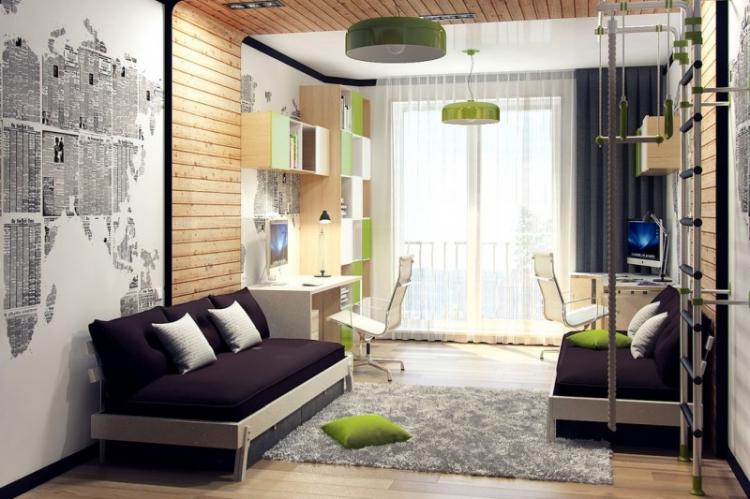
Common areas
This division assumes two separate sleeping places and common areas for games. This is convenient for young, heterosexual children of about the same age. They are happy to play together, and for privacy they have enough beds.
But when the children grow up, problems can begin. You will need at least two separate workplaces and two storage spaces.
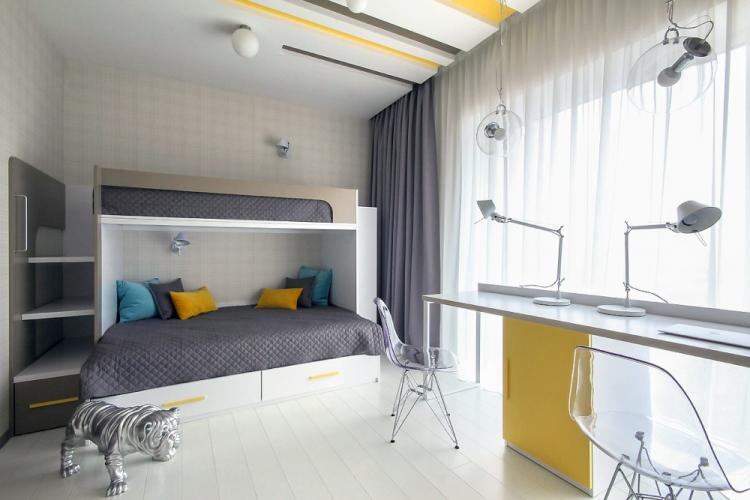
Methods for zoning a children's room
Designers have long come up with many tricks for zoning rooms. You don't even have to "reinvent the wheel".
Mobile partitions
Mobile partitions are the easiest zoning tool. For example, folding screens. They can be removed for the day, and reinstalled at night or for classes.
Such partitions differ from stationary structures in that they are lighter visually. This means they look less cumbersome in small rooms.
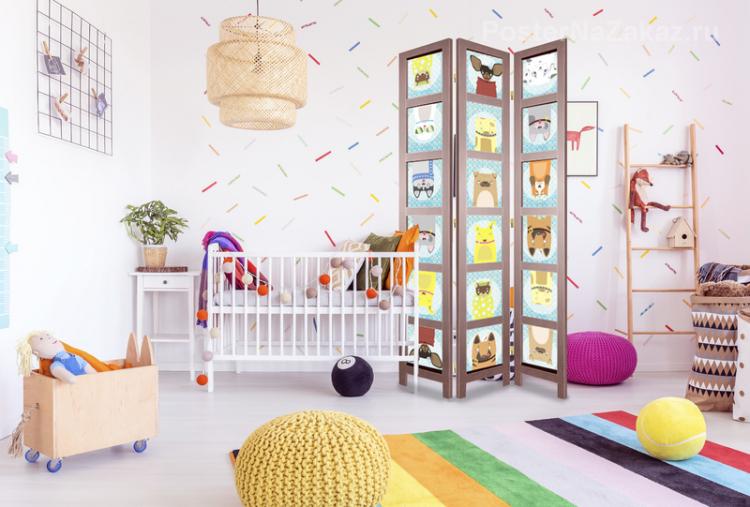
Plasterboard structures
It is possible to create structures of any complexity and configuration from drywall: from lightweight interior walls to elegant semi-arches or low racks.
Plasterboard structures, unlike mobile partitions, cannot be folded or removed. But they have another plus: inside you can build a whole storage system for things. And use the surface of low partitions instead of a table or shelf.
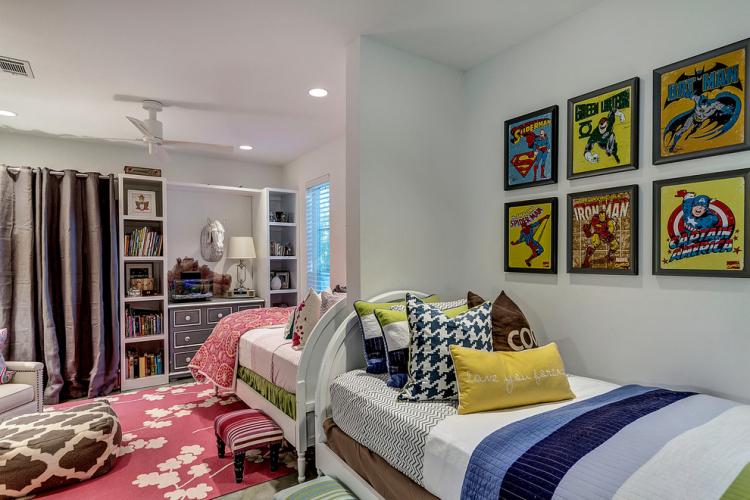
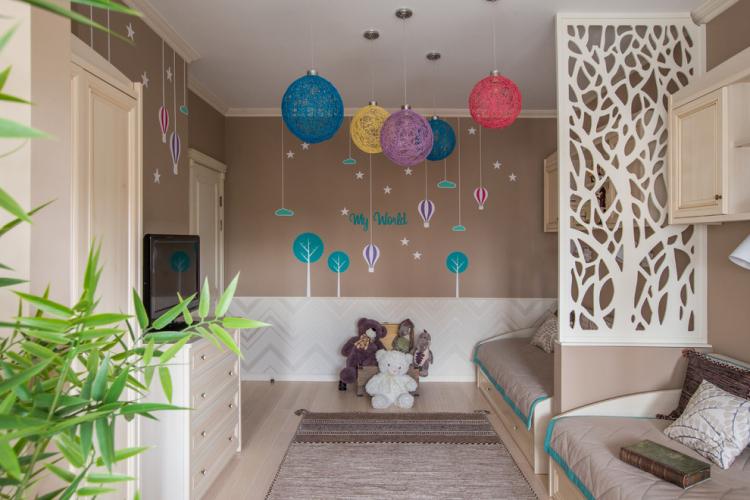
Cabinets and racks
Now there are tons of furniture options that are suitable for dividing a room. Of course, these are not bulky wardrobes in the ceiling. But shelves with shelves for books and cute little things look easier and immediately give the nursery a certain style and mood.
Pay attention to modular designs as well. Especially those that have access from both sides. They can easily replace a wardrobe, chest of drawers or pencil case. And in modern interiors, they can be interestingly beaten with the help of decorative lighting.
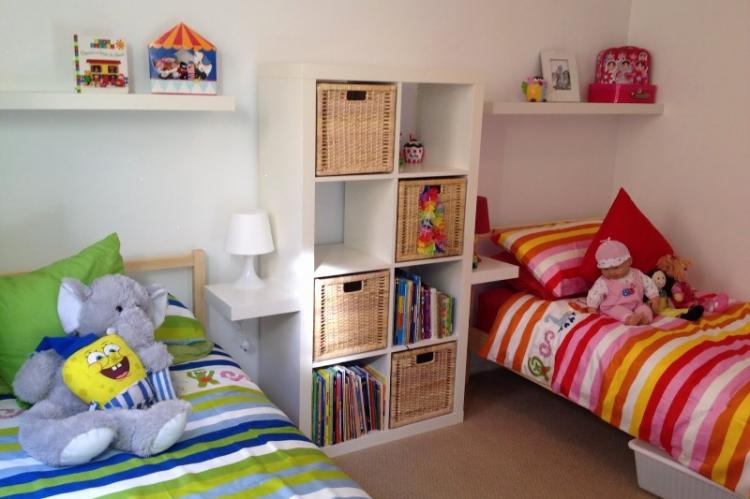
Curtains
Thick curtains are usually built into the ceiling instead of a partition. More precisely, the cornice is mounted in a plasterboard structure. But this also has its advantages and disadvantages.
The plus is that the curtains slide in and out easily as needed. They can always be removed for washing or replaced with new ones if children want to freshen up the interior.
Disadvantage - textiles attract dust, easily get dirty and fire hazardous.For young children, this is not the best option. So first, weigh the pros and cons.
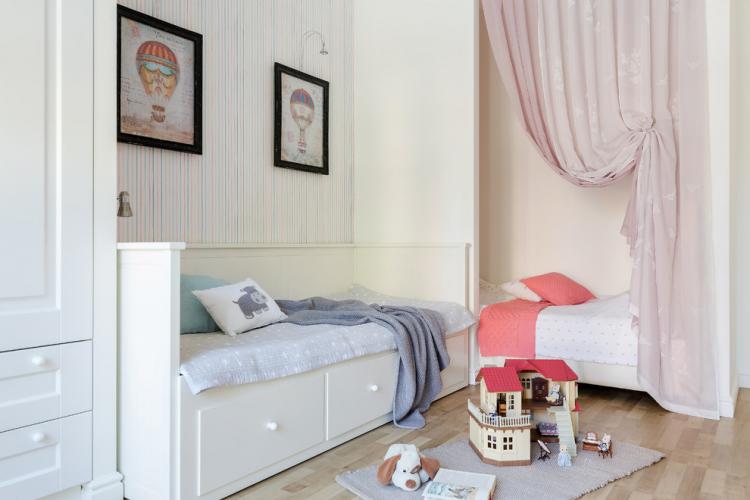
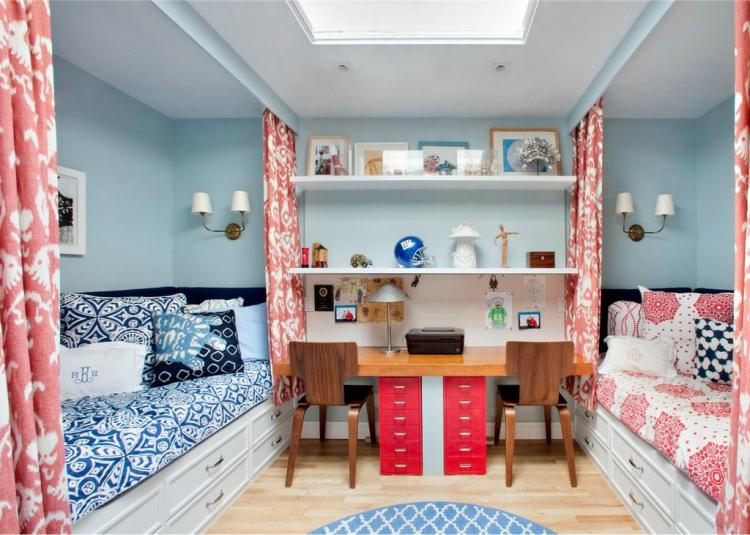
Visual zoning
Visual techniques include zoning with materials, colors and textures. This also includes podiums and ceiling structures.
But in the case of dividing the children's room for children of different sexes, such tricks are best used as an addition, and not as a basis. With only light and color, you can change the perception of a room, but not create two secluded corners.
But with the help of a podium and lighting, you can perfectly highlight the play or work area.
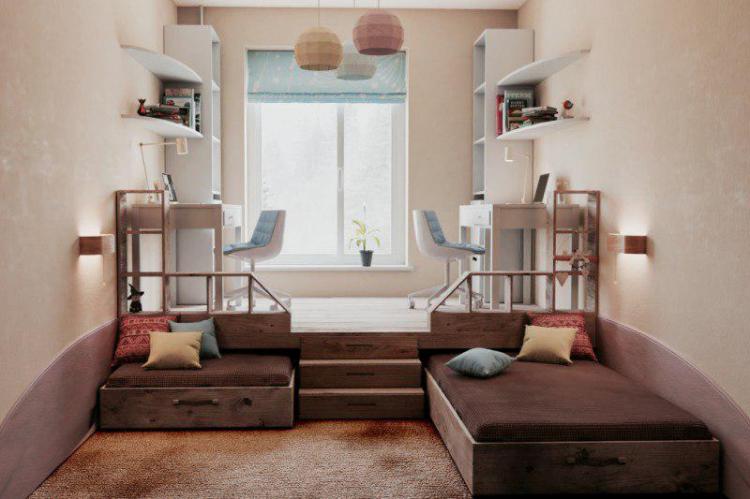
Installing the bed
The most difficult thing in the nursery for children of different sexes is to separate sleeping places. For small rooms, bunk beds or modern transforming systems are suitable, they take up less space.
But if space permits, it is better to divide the sleeping areas more clearly, because the older the children get, the more they need their own corner.
In an elongated rectangular room, try to install beds against one wall, and put a mobile or sliding partition in the middle. Or integrate the curtain rod into the ceiling structure.
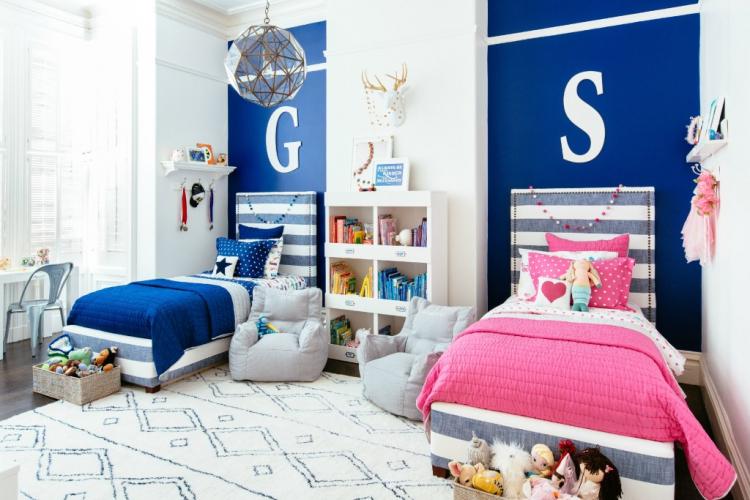
The easiest way is to set the beds against opposite walls. And in the center of the room there will be a common area that the children themselves can divide when they need it.
A convenient option is modern transforming furniture. One such complex will fit a bed, a table, and shelves with wardrobes for storing things. Then, in the rest of the room, you can safely install a sports corner, a TV set with a set-top box or any other entertainment.
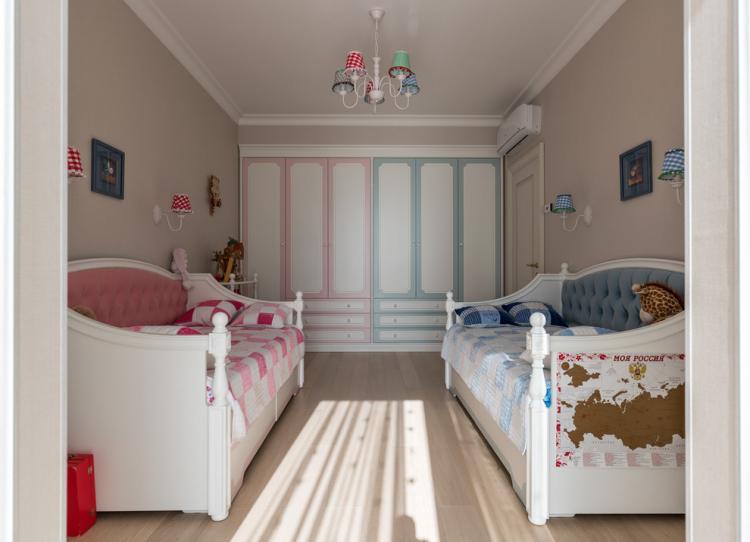
Correct lighting
The correct light is especially important for a growing child's body. Moreover, kids are engaged in creativity, read, study, do their homework. Therefore, the organization of lighting must be approached no less carefully than the choice of a bed or a workplace.
Natural light
The best light is always natural. That is why the brightest room is traditionally chosen for children. Ideally - with windows to the east or southeast.
Sunlight affects the entire lifestyle of children, their emotional background, vigor and performance.
Even curtains for the nursery are recommended to be light, airy and transparent. And at night, if necessary, lower dense rolled canvases, like Roman blinds.
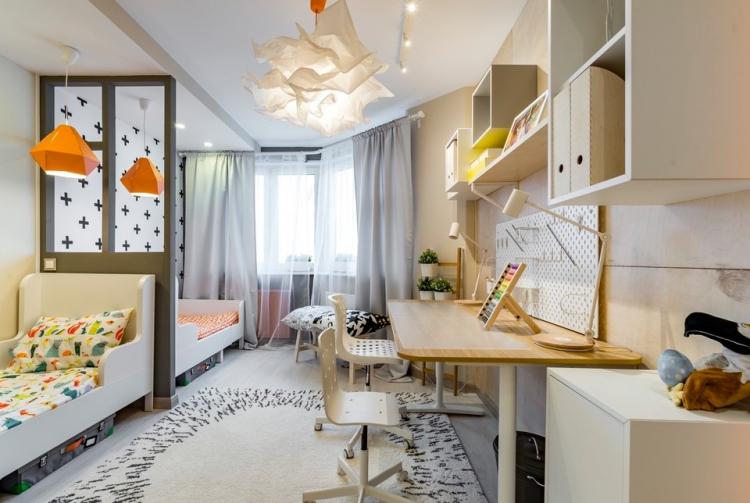
Artificial lighting
The modern trend is multi-level lighting. This is especially valuable in the children's room.
- The bright overhead light is suitable for the play area. It is better to place the central chandelier just above it. If this area is in the corner, the problem will be solved by two-tier plasterboard ceilings with built-in spotlights.
- The middle level is the displaced diffused light above the sofa, computer table, near the TV.
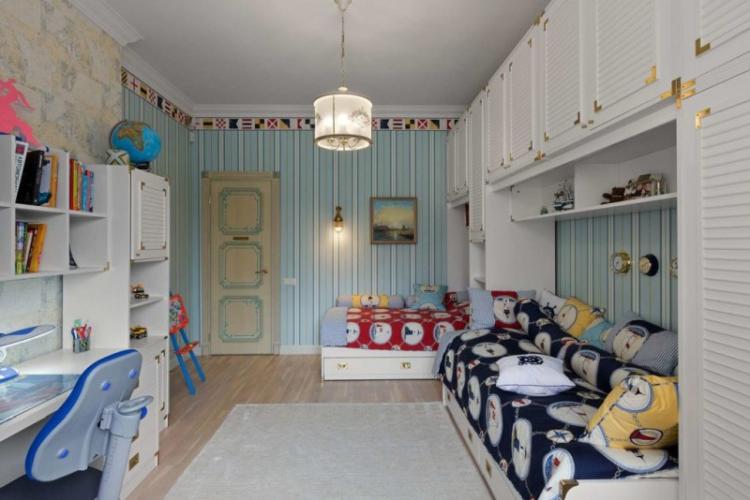
- The third level is work lighting. These are table and swivel sconces above the work table. It is important to think over this area so that the children do not interfere with each other.
“Don't forget about the light above the bed. Choose soft adjustable lamps for this. Especially when there are two children in the room. So one of them can, for example, read a book in bed, without disturbing the second.
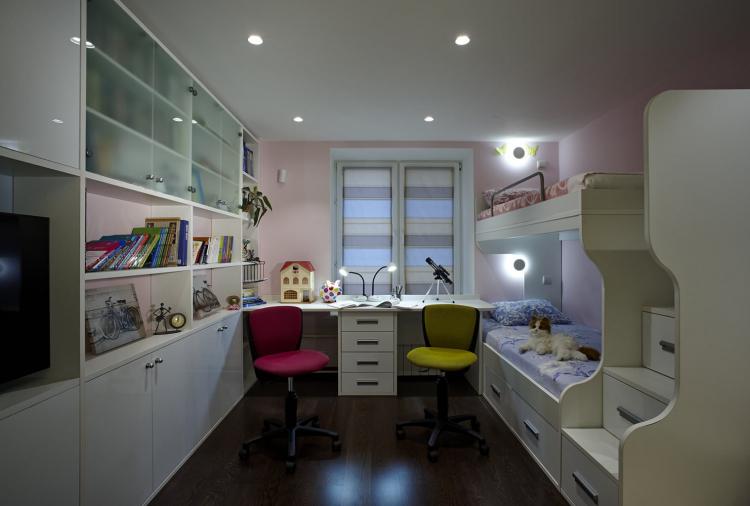
Power and brightness
Calculate the power of the lamps based on the following considerations: 10-15 watts per square for the entire room, 50-60 watts per square for the work and play area.
Don't forget about color temperature. For living rooms, two types of light bulbs are used:
- At 3000-4000K. It is a warm yellowish light for chandeliers and wall lights in living rooms;
- At 4000-5000K. It is a neutral backdrop for functional rooms. It is used instead of daytime.
Luminaires up to 3000K give a warm orange light. It is cozy for evening gatherings, but not suitable for everyday activities. Temperatures above 5000K are bluish white lamps, like in museums, hospitals, laboratories, shops.
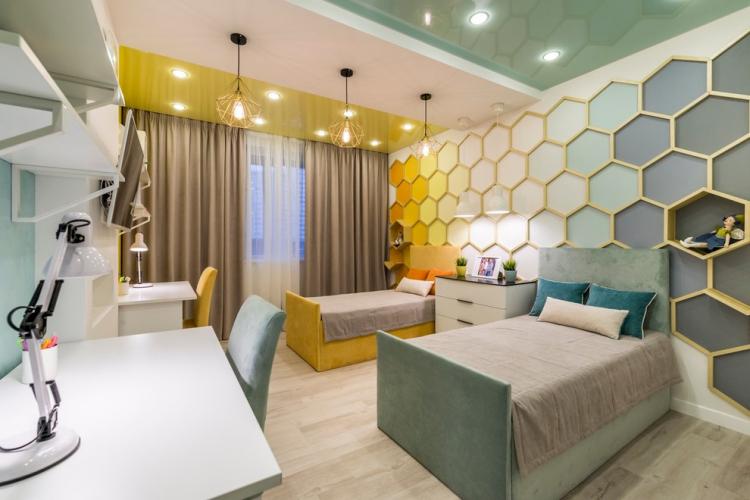
Color solutions
Each child is a person with their own tastes and preferences.Naturally, kids may like different colors and styles. Interests begin to form as early as 3-5 years old.
common topic
If a compromise has been reached between the children, the easiest way is to decorate the room in one color scheme. This will simplify the selection of furniture, textiles and parts.
Remember that children's preferences can change quickly. Therefore, for such global solutions, it is better to choose neutral themes that can be easily refreshed or changed with little things and accessories.
Simple modern interiors, natural, nautical or space themes, laconic technological styles - be sure to consider these options.
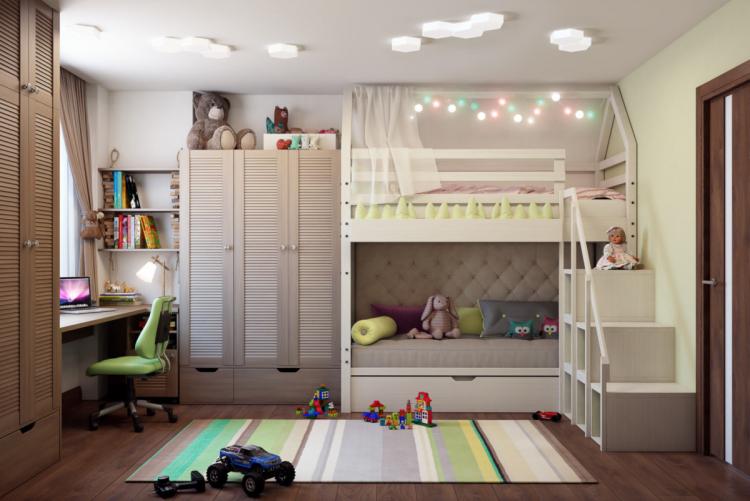
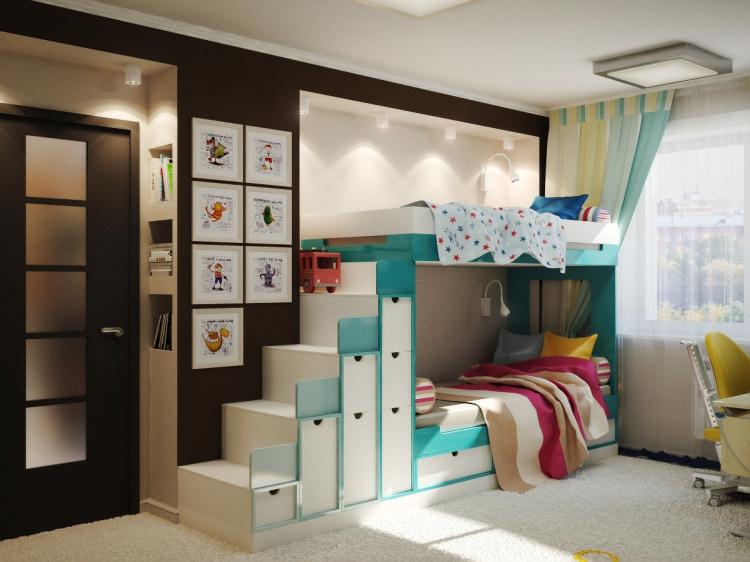
Monochrome
You can visually divide a room even within the same color. For example, decorate one part of the room in darker and richer emerald shades, and the other in pastel salad or bleached khaki.
Natural textures and colors look very stylish in this interpretation: woody, sandy, brown shades. And children will place accents for themselves with the help of their favorite toys, crafts and jewelry.
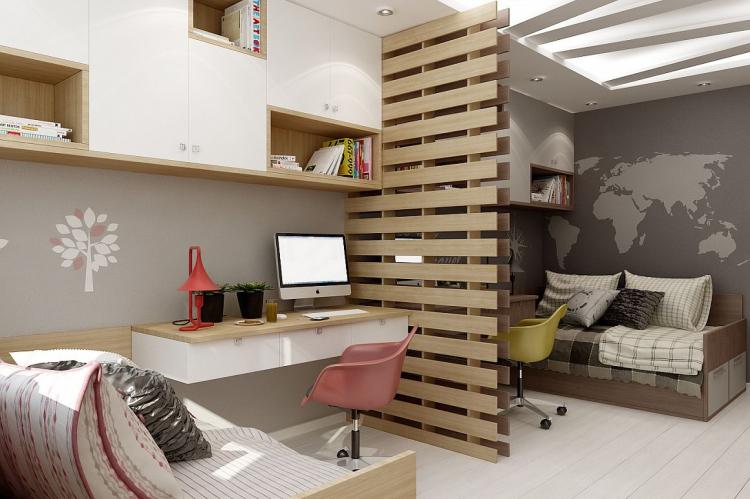
Contrasts
You can use completely different colors to separate the room of children of different sexes. But don't forget about color. And that the child's psyche is sensitive to visual stimuli.
Choose different shades, but not too flashy or harsh. For example, purple with gray, brown with green, yellow with blue.
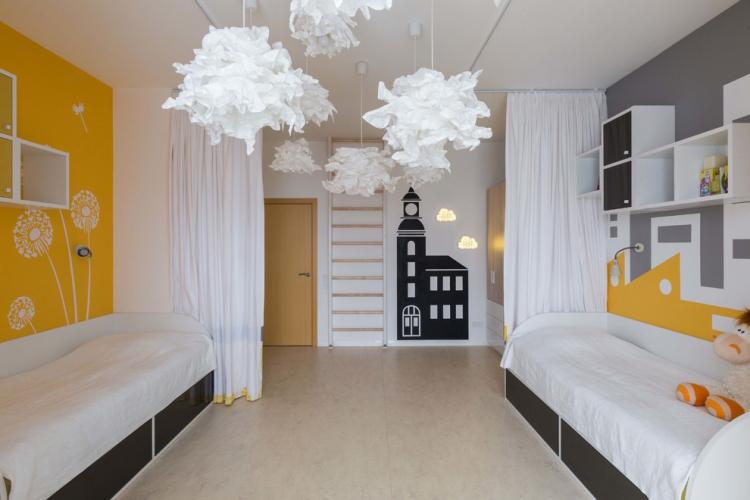
Which style should you choose?
It is always more difficult to decorate the interior of a room for children of different sexes. Therefore, the most popular design solutions are compromise.
Children's room in the style of minimalism
By itself, minimalism is "bland" for a nursery. But on the other hand, it will become a universal uniting background, on the basis of which you can design different zones with the help of accents. Thus, even a bright nursery will not be lurid.
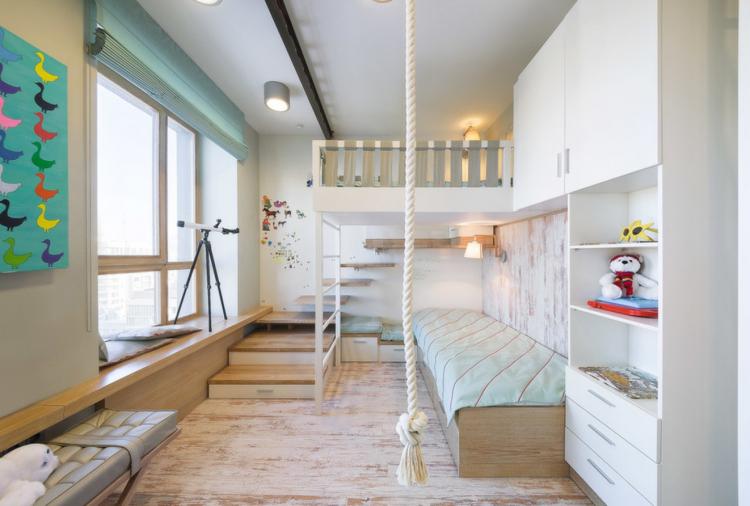
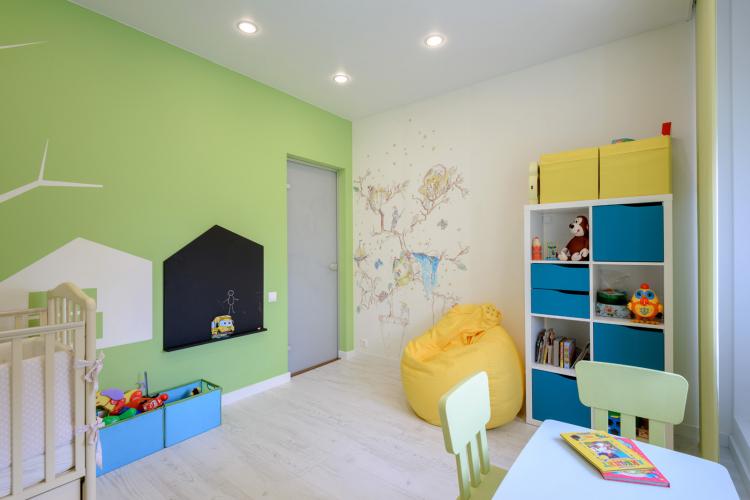
High-tech children's room
Technological hi-tech is, first of all, lightness and functionality. For example, a frame metal rack for room zoning is much lighter than a classic closed bookshelf.
Any sports and play corners easily fit into hi-tech.
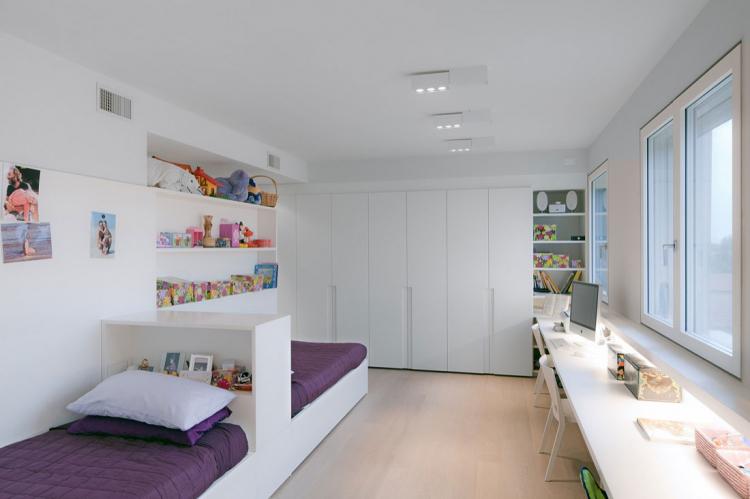
Children's room in the loft style
Loft interiors are ideal for creative kids. They are deliberately rude, simple and eclectic. This means they create an ideal base for self-expression.
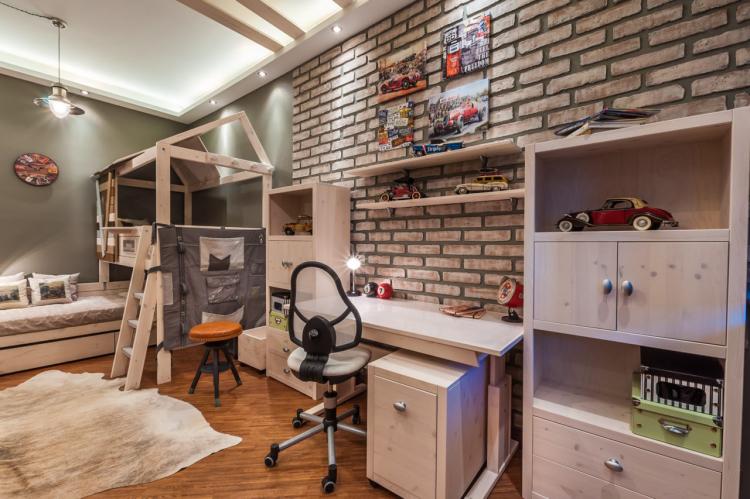
Scandinavian style children's room
Scandinavian style is warmer and more comfortable than usual minimalism. He gravitates towards natural materials and colors. And also - for hand-made, so that children can decorate the room with their own crafts.
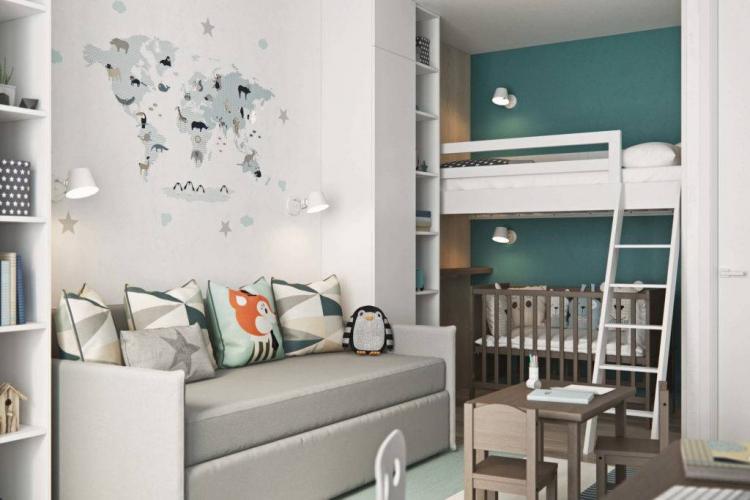
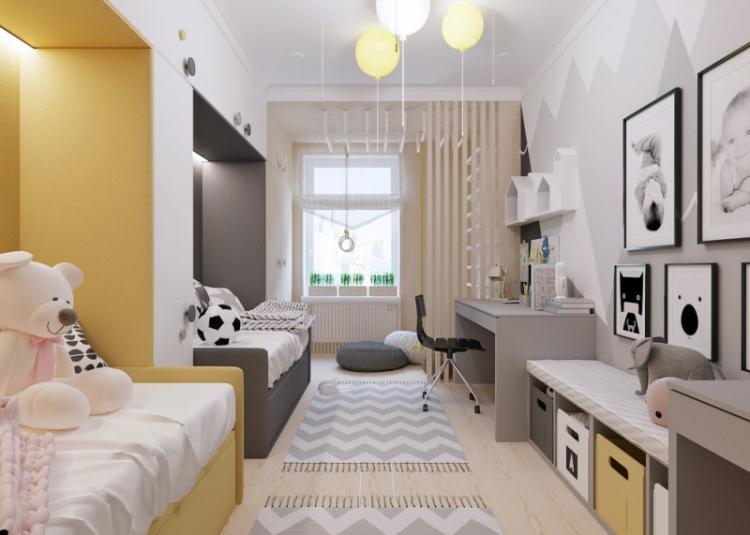
Children's room in a classic style
The classic craving for symmetry is an excellent base for zoning and furniture arrangement. Massive furniture is functional and spacious. Natural wood, stone and textiles are environmentally friendly and safe.
Classic interiors are suitable for older children.
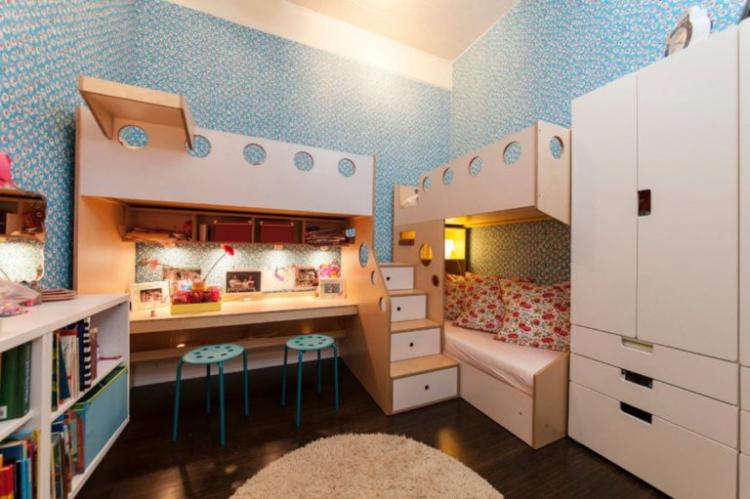
Small nursery for children of different sexes
It is very difficult to plan a comfortable nursery for children of different sexes in a small room. After all, you can't just give up toys, textbooks and other important little things.
Move the closet outside the room if possible. Leave only the most necessary zones in it: sleeping, working, playing. Likewise, it is better to take out a sports area or musical instruments.
If the nursery has an exit to the balcony, feel free to insulate it and demolish the partition. You can remove it completely and expand the space, or you can leave it in half and equip its surface as a work area.
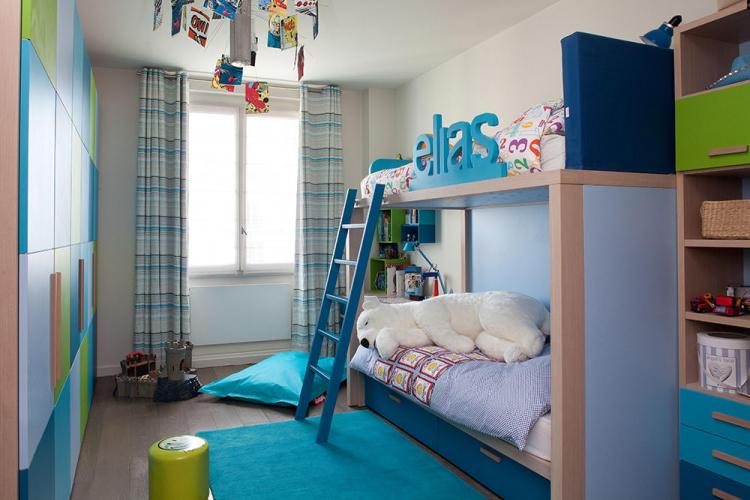
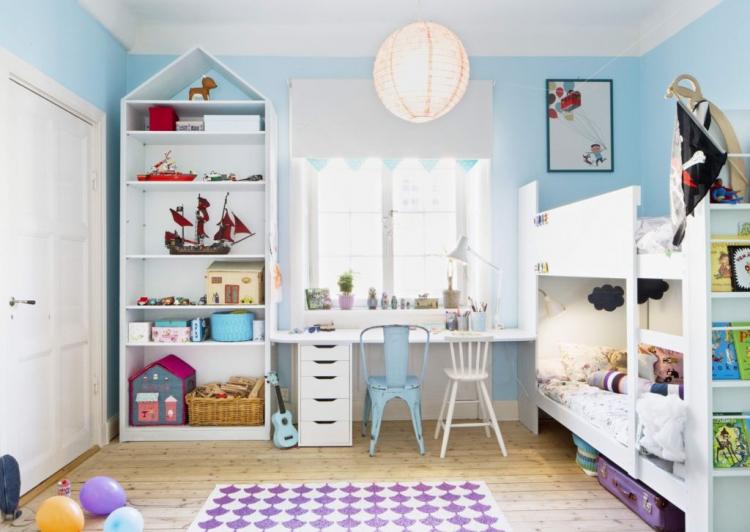
Children's design for children of different sexes - photo
To finally decide on a suitable solution to such an important task, first study various examples and projects. For this, we have prepared a selection of photographs of existing interiors of rooms for children of different sexes. Watch and be inspired!
